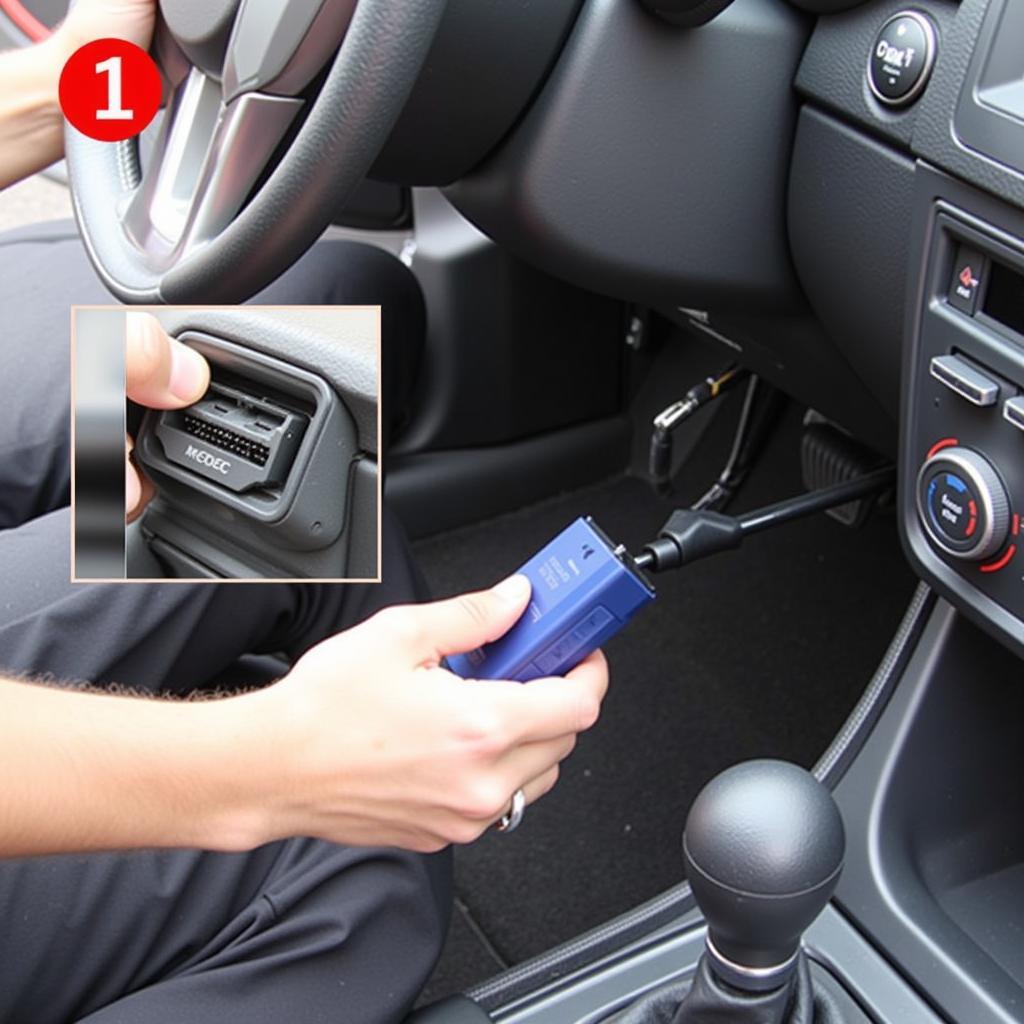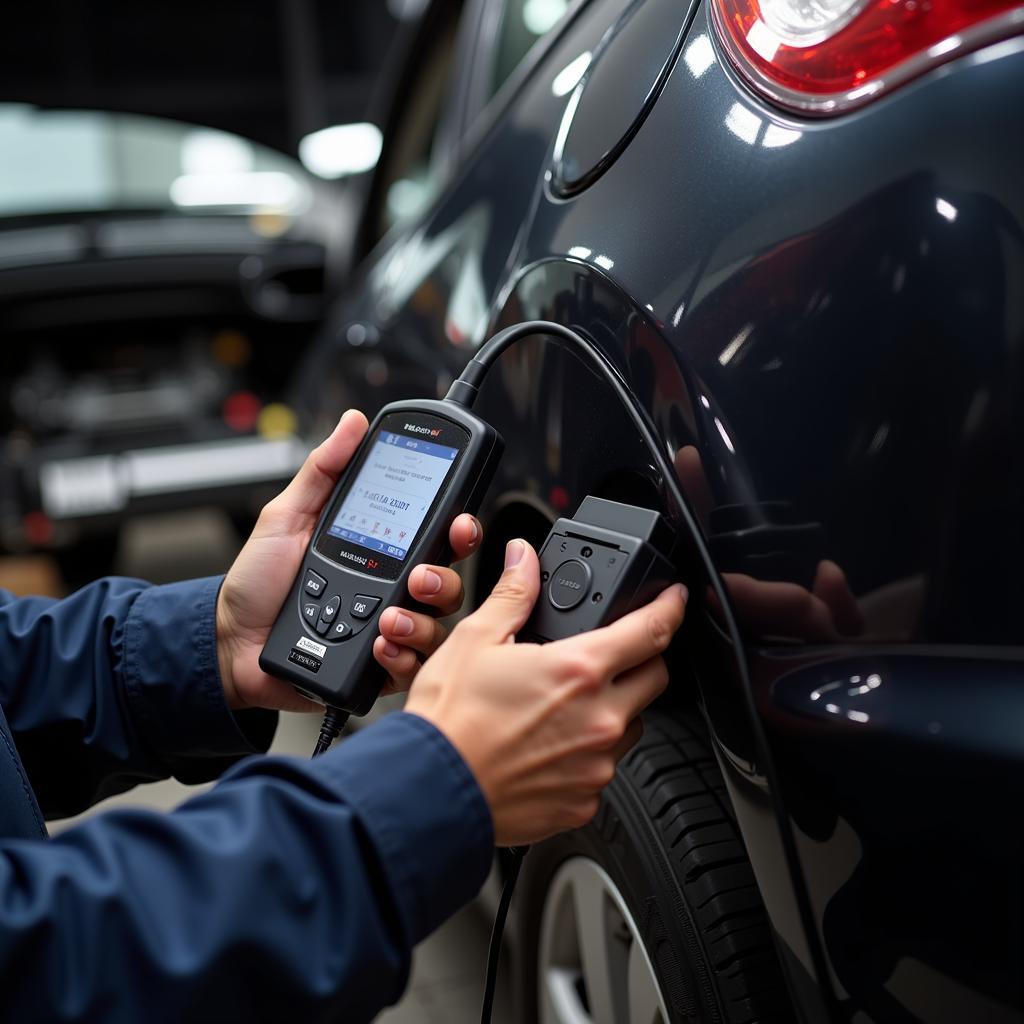A car code scanner, also known as an OBD-II scanner, is an essential tool for any car owner or mechanic. Understanding how to use a car code scanner can save you time and money by helping you diagnose car problems quickly and accurately. This guide will walk you through the process, from plugging in the scanner to interpreting the codes.
Similar to how to use code scanner car, using a car code scanner involves understanding the basics of your vehicle’s onboard diagnostics system.
Locating the OBD-II Port and Connecting the Scanner
The first step in using a car code scanner is locating the OBD-II port. This port is typically located under the dashboard on the driver’s side, often near the steering column. Once you’ve located the port, simply plug the car code scanner into it. Make sure the scanner is securely connected before proceeding.
Turning the Ignition On
With the scanner connected, turn the ignition key to the “on” position. Do not start the engine. This will power up the car’s computer and allow the scanner to communicate with it. The scanner should power on automatically. If not, refer to the scanner’s manual.
 Connecting OBD2 Scanner to Car's Port
Connecting OBD2 Scanner to Car's Port
Initiating the Scan and Retrieving Codes
Most scanners have a simple interface with a “read” or “scan” button. Press this button to initiate the scanning process. The scanner will communicate with the car’s computer and retrieve any stored diagnostic trouble codes (DTCs). These codes are what tell you what’s wrong with your car. This process is similar to the way a security car scanner works, but instead of looking for security vulnerabilities, it’s looking for diagnostic codes.
Understanding the Codes
Once the scan is complete, the scanner will display the retrieved codes. These codes are usually a combination of letters and numbers. Write down these codes so you can look them up later. While some scanners provide basic code definitions, it’s essential to have a comprehensive understanding of how to interpret them. This is where knowing how to read car scanner codes becomes crucial.
Looking Up Code Definitions
With the codes in hand, you can look up their definitions. There are numerous online resources and code books available that provide detailed explanations of each code. Understanding the code definitions is crucial for accurate diagnosis.
What do the codes mean?
The codes indicate specific areas or systems in your vehicle that have encountered a malfunction. For example, a code relating to the oxygen sensor might suggest a problem with the emissions system.
Clearing the Codes
After you’ve addressed the issue that caused the codes to be stored, you can use the scanner to clear them. This is important because it allows you to verify that the problem has been resolved.
Just as with a rental car bar scanner with receipt printer which streamlines administrative tasks, an OBD-II scanner simplifies car diagnostics. Consider a kobra products wireless obd2 car code reader scan tool 2-pack for enhanced functionality and convenience.
Conclusion
Knowing how to use a car code scanner is a valuable skill for any car owner. By following the steps outlined in this guide, you can diagnose car problems efficiently and avoid unnecessary expenses. Contact ScanToolUS at +1 (641) 206-8880 or visit our office at 1615 S Laramie Ave, Cicero, IL 60804, USA for further assistance.
FAQ
- What is an OBD-II port? It’s a standardized diagnostic port found in most vehicles manufactured after 1996.
- Where is the OBD-II port located? It’s usually located under the dashboard on the driver’s side.
- Do I need to start the engine to use a car code scanner? No, just turn the ignition to the “on” position.
- What are DTCs? DTCs, or Diagnostic Trouble Codes, are alphanumeric codes that indicate specific malfunctions in your car.
- Where can I find code definitions? Numerous online resources and code books provide detailed explanations.
- Can I clear the codes myself? Yes, most scanners allow you to clear codes after addressing the underlying issue.
- What if my scanner doesn’t power on? Consult the scanner’s manual for troubleshooting steps.


